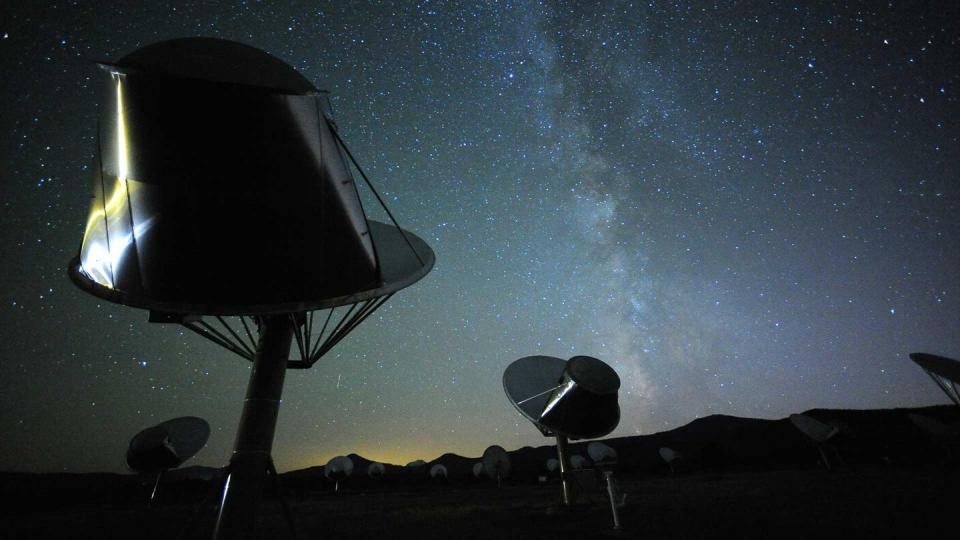New Jersey Police Disarmed a Homemade UFO Detector
Someone left a homemade UFO detector in a New Jersey state park, prompting police to dismantle it.
The real scientists who listen for aliens use radio telescopes.
SETI has one of the most advanced radio telescope arrays in the world.
New Jersey State Park Police in Wharton State Forest disarmed a homemade “UFO detector” earlier this month, unplugging a headphones cable from a block of wood and a soup can. Behold:
The story is funny, but is there any way you, a humble Earthling, could really detect an unidentified flying object from some mysterious origin?
➡ You love weird science. So do we. Let’s nerd out over them together.
Let’s start with the facts. The mystery inventor fashioned their homemade device from a block of wood, a soup can, and an ⅛-inch plug audio cable. There was no power source, no listening device or input of any kind, nor an output where someone could read or record what was happening. The homemade device would need at least a couple more working parts in order to, well, work.
Police say they have to treat suspicious things like this seriously, even if they suspect the devices are more of a joke than a threat. From far away, you could see this gadget and wonder if it were some kind of explosive—and it’s better to find a joke at a distance than a bomb up close and personal.
In this case, the New Jersey park police deployed a bomb-sniffing dog to check out the scene before they dismantled the fake device.
We admire the inventor’s DIY spirit here, but what would you need to really pick up signals from extraterrestrials? Well, most places on Earth that listen to space have huge satellite dishes, for example, that collect huge bouncing waves that come in from space.

Take the Search for Extraterrestrial Intelligence’s (SETI), Alien Telescope Array (ATA), a huge area north of San Francisco made up of different radio telescopes that absorb radio waves from many areas of space at once. SETI built the array after decades of piggybacking existing radio telescopes to do research, but ATA scans a bigger area for a much wider range of bandwidths.
The radio telescopes are basically souped-up antennas, which means you could hear a loud-enough alien signal on your AM/FM radio at home. Radio telescopes operate with the same basic idea—to gather radio waves—just with an enormous difference in sensitivity and possible bandwidths. SETI’s ATA collects between 500 and 10,000 megahertz (MHz).
You can build your own radio telescope with the right supplies. Hackaday explains:
“[A]ny radio telescope project like this is essentially made up of two separate systems: one that provides the motorized aiming of the dish, and the receiver that actually captures the signals.”
Hackaday says a homemade radio telescope can be powerful enough to detect satellites in orbit, or to “see” the sun using radio waves.
You might hear ETs once they arrived on Earth, but is there a way to detect them on their home turf? Probably not. Sophisticated and cutting-edge radio telescopes cost millions of dollars and mostly exist at scientific research facilities like SETI’s. Even having just one powerful radio telescope rather than a whole array of them means pointing into one part of space at a time while ignoring the rest.
For now, save your soup cans and ⅛-inch audio cable for other purposes at home—and let the experts listen for the aliens.
🎥 Now Watch This:
You Might Also Like

 Yahoo Movies
Yahoo Movies 
